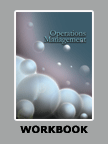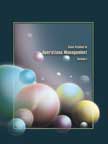Operations at Whirlpool




|
|
ICMR HOME | Case Studies Collection
Case Details:
Case Code : OPER034
Case Length : 15 Pages
Period : 1990 - 2004
Organization : Whirpool Corporation
Pub Date : 2004
Teaching Note : Available
Countries : USA
Industry : Consumer Appliances
To download Operations at Whirlpool case study
(Case Code: OPER034) click on the button below, and select the case from the list of available cases:

Price:
For delivery in electronic format: Rs. 400;
For delivery through courier (within India): Rs. 400 + Rs. 25 for Shipping & Handling Charges
» Operations Case Studies
» Case Studies Collection
» ICMR HOME
» View Detailed Pricing Info
» How To Order This Case
» Business Case Studies
» Case Studies by Area
» Case Studies by Industry
» Case Studies by Company
Please note:
This case study was compiled from published sources, and is intended to be used as a basis for class discussion. It is not intended to illustrate either effective or ineffective handling of a management situation. Nor is it a primary information source.
|
|
<< Previous
Excerpts
Operations at Whirlpool
Whirlpool's operations were based on Six-Sigma, and lean
manufacturing skills and capabilities. The company used information technology
tools to cut down on the cost of doing business. Its unique global platform
helped it transfer its key innovations and processes across regions and brands.
Globalization of Key Functions
|
During the mid-1990s, Whirlpool carried out a massive restructuring and
reorganizing exercise to create a more responsive environment to work in. In
this process, it globalized some of its key functions including procurement and
product development.
Whirlpool's procurement was one of the first functions to go global. As the
company was spread across the globe, suppliers found it a very attractive
customer. Whirlpool's Global Procurement department entered into deals with
suppliers around the world and ensured that it used only high-quality, low-cost
materials and components while manufacturing its home appliances.
|
|
By selecting and partnering with the best suppliers globally, it tried to
deliver the best value to its customers. Further, a partnership with
Whirlpool benefited the suppliers as it gave them an opportunity to sell
globally...
|
|
Conclusion
By 2003, after more than a decade in logistics planning, Whirlpool's
supply chain was 50-60 percent complete. Although the company ensured
that it consistently improved its quality levels and reduced its cycle
time and costs, there was still a lot of scope for improvement. Selling
its products on a global platform was a very difficult and challenging
task. Its warehouses had to get faster, its transportation carriers had
to reduce transit time, factories had to change schedules faster and run
with smaller lot sizes so that they could produce several SKUs every
day. And for this, it realized that its entire supply chain had to be
made more flexible... |
Exhibits
Exhibit I: Major Home Appliance Companies (In 2002)
Exhibit II: Appliance Industry in the US
Exhibit III: Whirlpool's Brands
Exhibit IV: Whirlpool Corporation in 2002
Exhibit V: Push Based Manufacturing
|
|



